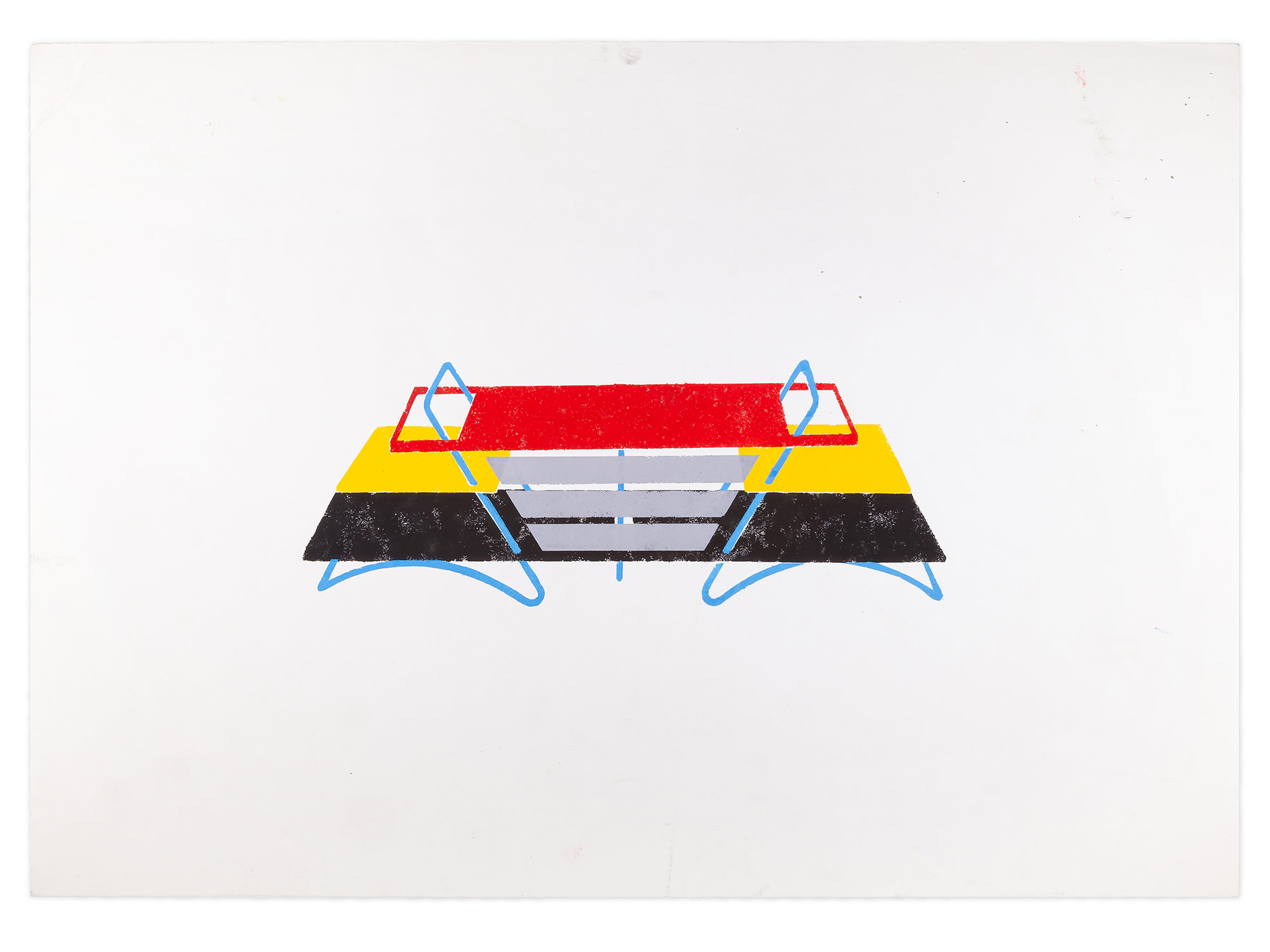Jasper went on from his foundation course to study 3D design at Kingston School of Art. Peter Lloyd Jones was head of the course. At Kingston, Jasper first met James Irvine, who subsequently became a great friend. In the course of his BA degree, Jasper designed a torch, a cabinet and some low tables. He wrote his dissertation on British Surrealism. At the end of his degree he presented his Sofa, Bookshelf, Sideboard (print, above, and drawing, below) and Handlebar Table.
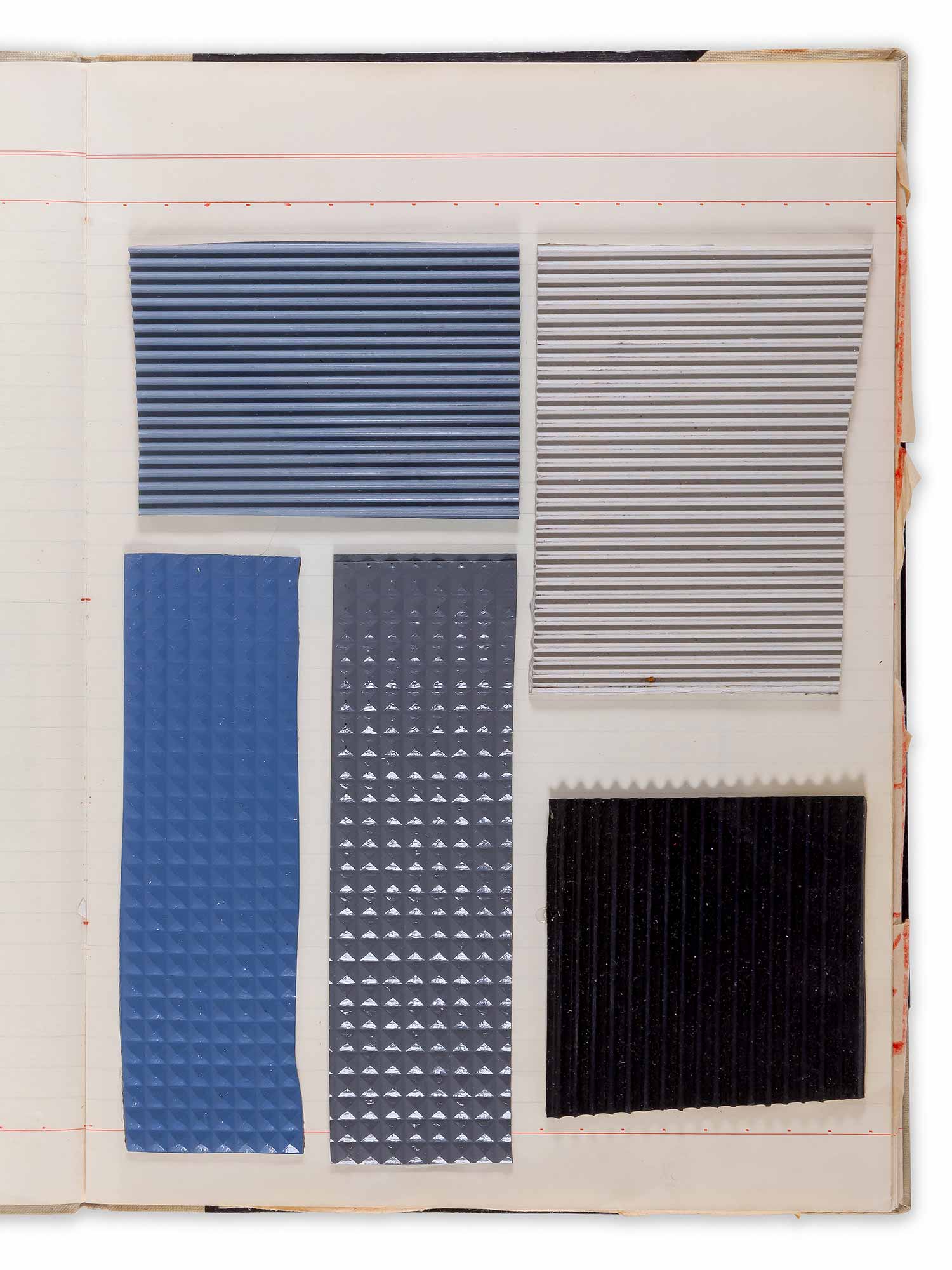
Textures stuck into a sketchbook from the time.
I had a Honda 90cc motorcycle which I used to get to Kingston from the family home in Westbourne Park Road. On the first day I pulled up at a traffic light at the bottom of Kingston Hill next to James Irvine on his Triumph. He was at that point a second-year student and unimpressed by my vehicle. I barely knew him at Kingston but we became close friends at the Royal College in the single year we shared there (my first year).
The art school was a reasonable piece of architecture on the banks of the Hogsmill river, less impressive than the Ravensbourne building, but with a creative enough atmosphere. As I remember it, all three years of 3D design students were in one long room with windows onto the river at ground-floor level. At the end of the room were the tutors in their own boxed-off space. The full-time tutor was Mick Warren, a wonderfully abrupt cheap-cigar smoker, who thought every other design course including the RCA’s was ‘a load of crap’. He wasn’t easy to get along with but by the end of the third year we had a grudging respect for each other.
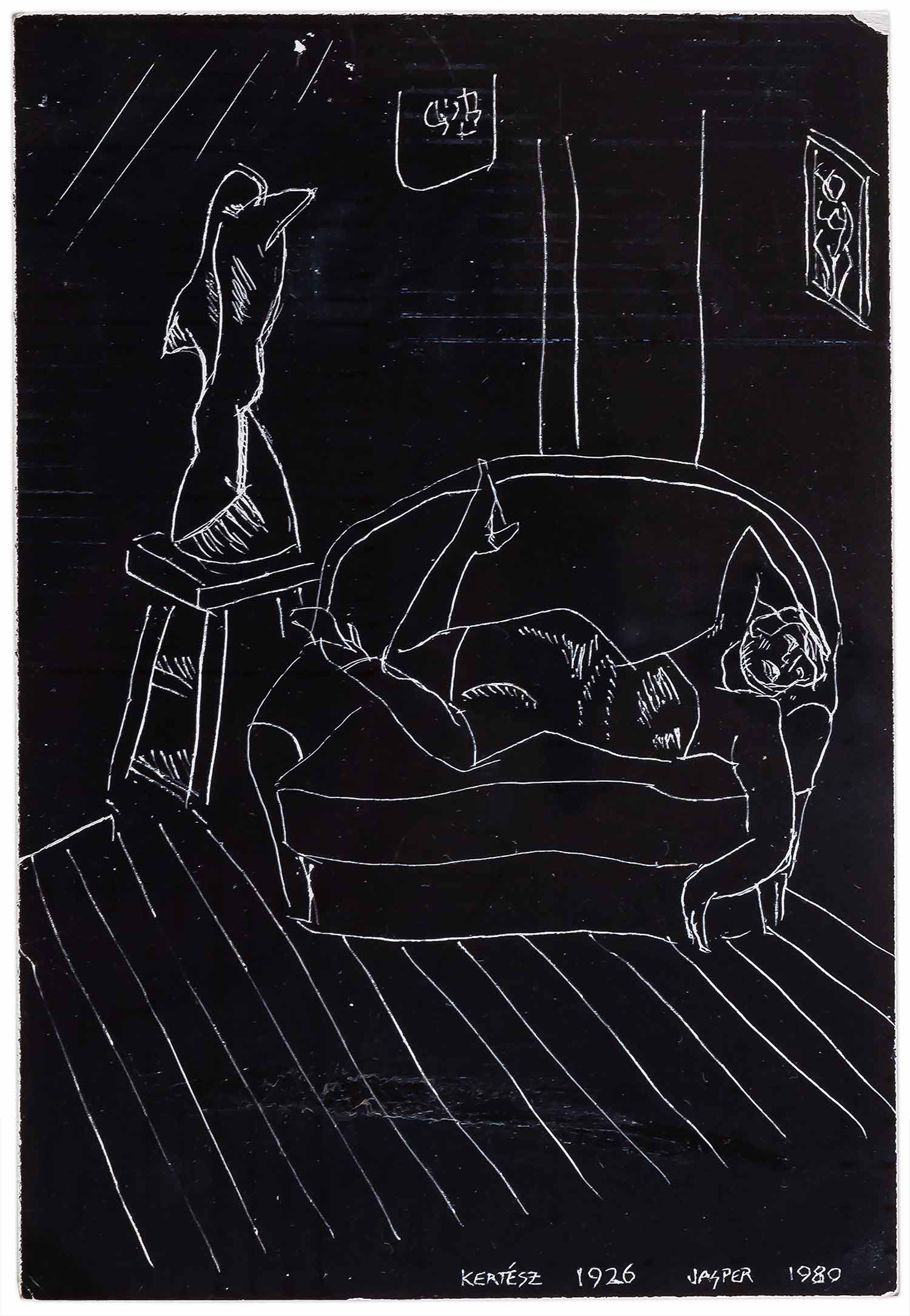
An etching by Jasper in 1980, from André Kertész’s 1926 photograph Satiric Dancer.
Upstairs was the lair of Peter Lloyd Jones, the head of the 3D and interior design courses. He wore a sleeveless leather jerkin and worshipped the Bauhaus colourist Johannes Itten (who had also worn a leather jerkin). He didn’t appreciate any opposition to his decisions and when I led a student protest over the main design project – the re-design of a lawn mower – on the grounds that it was a cosmetic project and not sufficiently interesting, he squashed the rebellion by bribing students to do the lawn mower for a small fee. I suspected the owner of the lawn mower factory was a friend of his. Those that refused were asked to accept an alternative project of his choosing, in advance of knowing what it was. I took the risk and had to design a folding barbecue. Things came to a head between me and Peter Lloyd Jones a couple more times. Once he called me to his office and explained that my approach to design was too much based on ideas, and that people run out of ideas. He put me on probation, tasking me with making a model of an electric drill. I had the impression he thought this would bring me back down to the ground. My youthful confidence must have annoyed him and I may have deserved it!
Fortunately the workshops were well equipped and abundantly supplied with materials. The technicians were a mixed bunch. The woodwork technician was a lovely man called Peter Tagg, very supportive and resourceful, including during the holidays when he ran the workshops as a side business, but would find time to help you out all the same. His wife made a fine job of the upholstered elements for my sofa project for the degree show. The metalwork technician was different: you had to beg him to do anything and even then he’d make you wait several days and require several compliments before he finally lifted a finger to help you with anything. It was partly this obstruction which led me to making the bicycle Handlebar Table with its readymade metalwork parts.
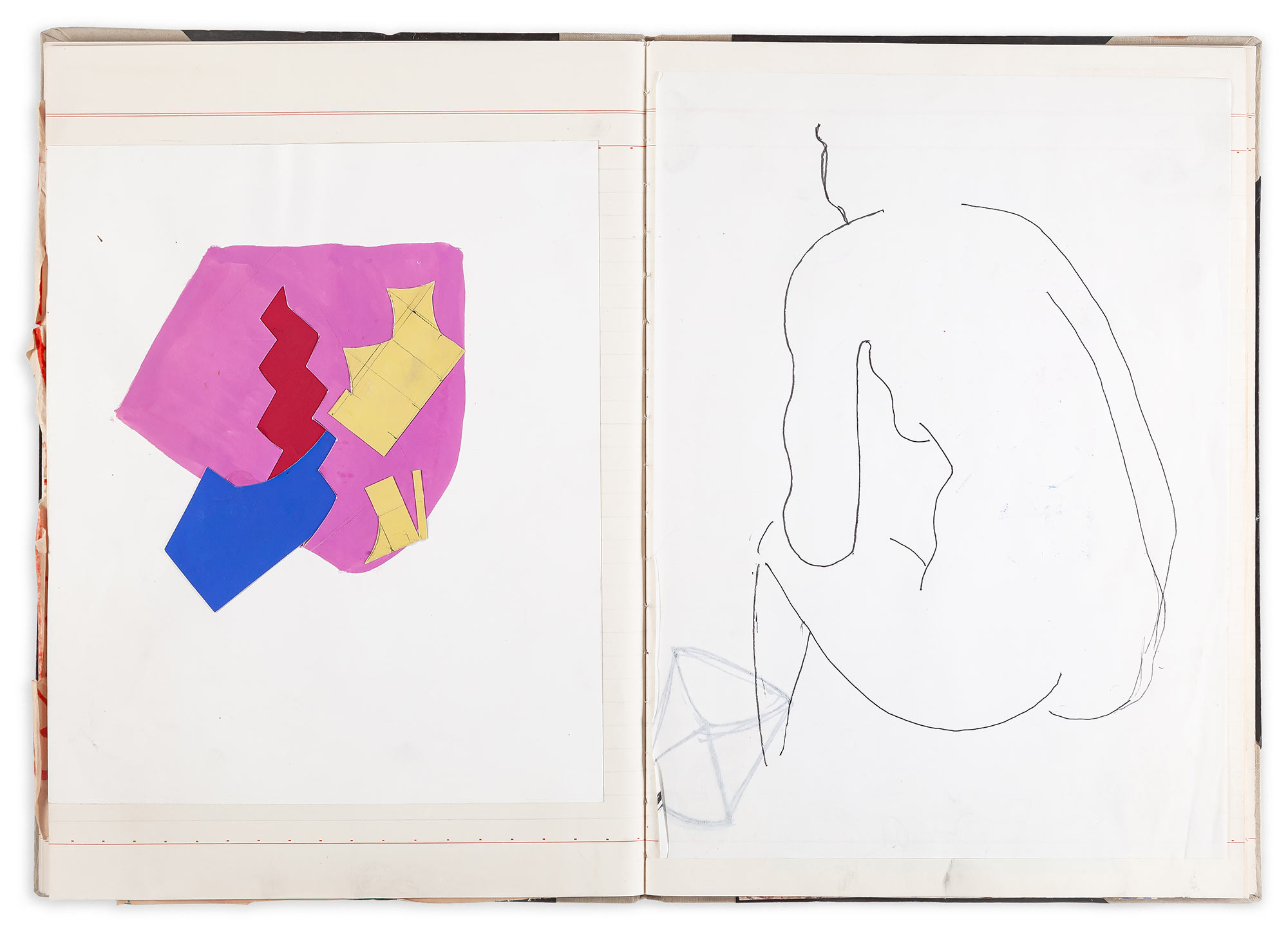
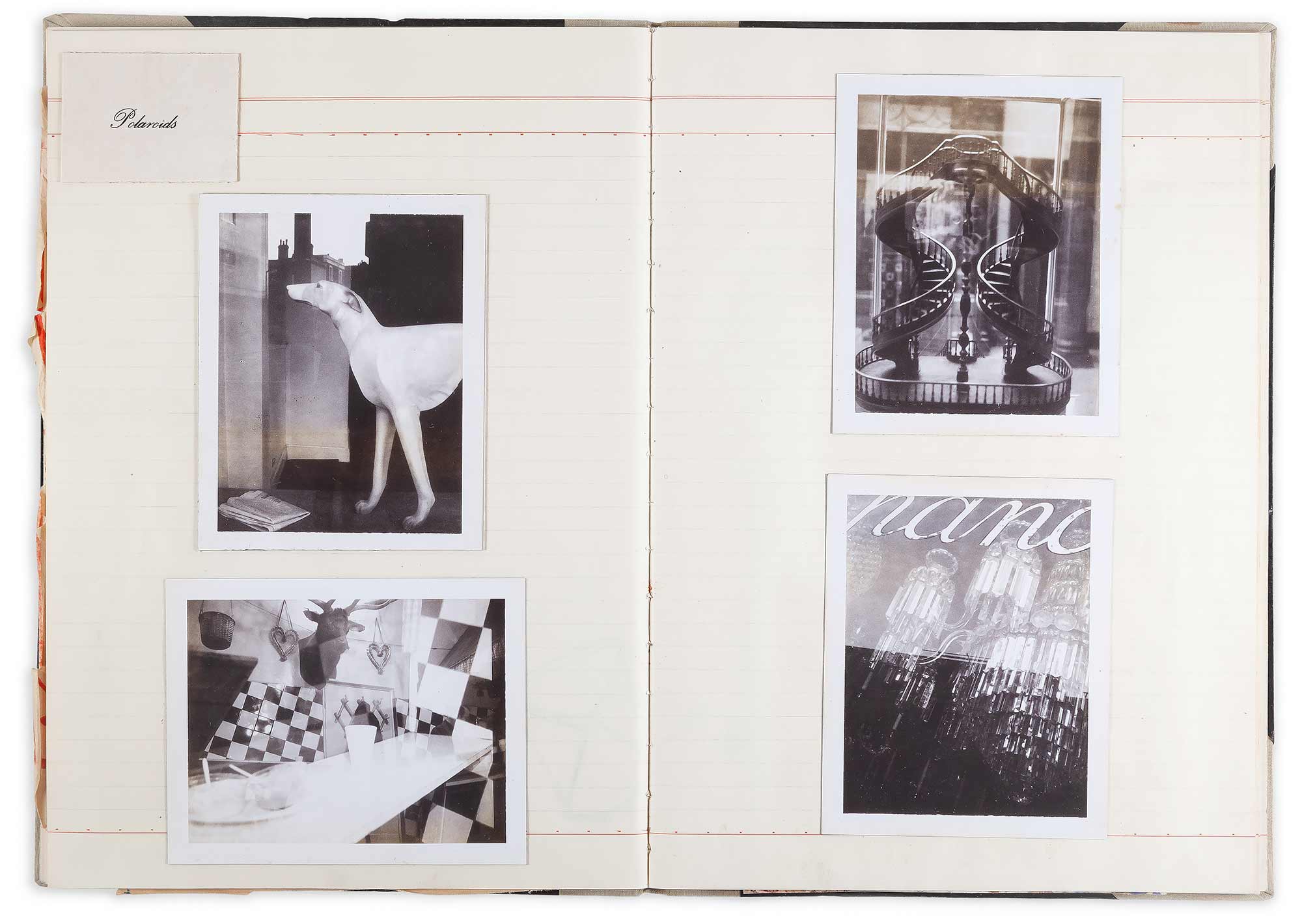
The visiting tutors were a wonderful bunch. There were regulars like Dinah Casson and Jane Dillon, who brought professional experience and a worldly sophistication that would otherwise have been absent, and then occasional luminaries such as Gijs Bakker and Yrjö Kukkapuro who some of us knew about and respected greatly. There was also an impressive design history element to the course run by Jan Burney, a Scot with whom I had a long-running and friendly debate about the originality of Charles Rennie Mackintosh. I thought he must have been influenced by the Viennese while she was sure he wasn’t. I always had good relations with the college design historians, probably because I was one of the few people interested.

The Sideboard, presented at the end of Jasper’s degree.
